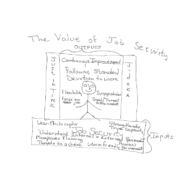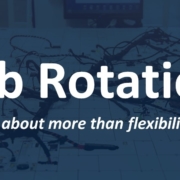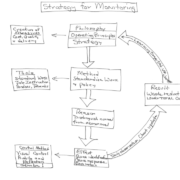The Role of HR in a Continuous Improvement Organization: Courage to Fight and Attain HR Excellence
(Reposted by permission of the author from LinkedIn)
What is courage? According to the ancient philosophers, courage is the combination of having a clear picture of what you want to achieve combined with a virtuous motive. It is often a balance between fear and confidence. Too much fear and you are a coward. Too much confidence and you are rash. These two concepts become important to an HR professional as they are confronted with situations every day that will test their courage.
What is excellence? I have put together what I call the Gold Standard for HR. The following captures the essence of the standards but in no way describe the full undertaking. Let start with them as a guide:
Adult to adult communications
- Always be faithful to your duties, thereby contributing to the company and to the overall good.
- Always be studious and creative, striving to stay ahead of the times.
- Use communication to open up experience and consensus
- Have the courage to let people try their ideas
Communicate vision to all
- Speak to the listening
- Connect the dots
- Buying-in to the vision frees the person to support their part of the system
- Leaders must represent it in really live terms every day.
Seek opportunities to resolve problems
- Problems are good
- Problem solving is the key to making progress
Model willingness to search for compromise
Plan for the development of ideas
Demonstrate flexibility
Allow not fully thought out ideas to grow based on the member’s learning
Value all people as willing to contribute
- Always be practical and avoid frivolousness
- Set expectations that reflect this belief
- Search for the resolution of issues quickly to restore flow to the process.
- Consider people as your most valuable asset to achieving the goals
Appreciate that things may get worse before they get better
- Allow time to grow into every execution
- Use metrics to monitor implementation progress
- Focus on improving the process as you resolve problems
Value diversity
- Growth comes in part from other’s perspectives
- Valuing all people is a good business strategy
- Eliminate group think
Go see the problem to gain insight
- Always strive to build a homelike atmosphere at work that is warm and friendly.
- Have the courage to let people try their ideas
- Hold members accountable to fix their own issues
Each of these are distinct but all are connected at the systems level. Adult to adult communications requires preparation and support. Preparation comes from coaching and training. Support comes from a willingness to serve one another. When practiced, each member has a sense of security that enable them to take a risk as an outgrowth of this aspect of mutual trust and respect. The HR system is built on interactions, clear perspectives about the value of every person in the organization and consistent execution of each to build trust.
Trust is not an abstraction. It is rooted in every interaction, every decision and every policy. When the interactions happen, the leadership must consider each of them a test of trust. Each member observing wants to know how they will be treated in a similar situation. They withhold trust until they can predict how each will turn out. Leadership cannot create isolated efficiency by having every decision treated as one that will never happen again. Each decision must be thought through until understanding of the current, future and the impact to the system of work are coalesced into one train of thought. This train of thought in decisions must be able to stand the test of time with consistency being vital. In the end, an HR person earns trust through their actions.
The HR thinking is to establish standards that are embedded into all expectations so the member can give their full attention to the execution. Distractions are minimized because they are non- value added and must be handled in an expeditious manner. Distractions lead to a reduction in value added and must be considered a priority to resolve them quickly to resume focus on adding value. For HR, these distractions create the opportunity to demonstrate how trust is to be earned. First, reflect on the situation and the rules and secondly, the impact their decision will have on others.
The fight is simple. It is to keep the organization aligned to the values, principles and expectations to accomplish its purpose. Each organization is different and therefore a unique challenge. Embedded into its daily work is the potential to have leaders alter expectations for the purpose of keeping the process moving. To most organizations, a short-term fix is best, but organization practices, expectations and outcomes must be studied carefully before any decision is made. Short term is to be considered in relation to the organizational impact in the mid and long term.
Although resulting chaos may seem preferable to taking more time on the decision, taking time may be the best defense against the creation of chaos in the first place. Time required that seems so limited can and will, by necessity, expand with an error in judgement. Judgement is the skill that requires an individual to make good decision in ambiguous situations. Ambiguity creates anxiety and the leader with support must take action quickly but not without good critical thinking. First the facts are determined. Secondly, the standard or basis of comparison is considered and finally the decision is crafted that eliminates the waste, chaos and the anxiety. The clear understanding is that no decision is isolated. All decisions form a foundation to the desired situation with the belief that the problem is solved. It is comforting to know that in a climate of continuous improvement, if a decision is not productive, improvement is still the demand and problem solving is reengaged to search for the root cause and the countermeasure to solve the issue. Since problems are good the organization becomes relentless in its pursuit of the elimination of waste and improvement.
When you consider where this thinking comes from, it is a conscious strategy created by HR to achieve the goals of customer satisfaction and development of the individual. Both make up the north star of a leader and are vital to achieve a workforce that understands the customer is number one and that the organization will not grow unless they grow. Growth ultimately comes from good thinking and have it in all aspects of the organization create the possibility of predictable contribution by every employee.
It turns out that HR gets its courage from a set of beliefs. Belief in the value of every employee. Belief in a process of critical thinking that leads to solving problems and creating of improvement and the charter to create an environment that is friendly, supportive and progressive. The virtue is the creation of the good that is embedded in the environment. Courage comes not from a blinding flash of insight but from layers and layers of carefully considered decisions tempered by the experience of having failed many times learning from each of them.
With placing value in experimentation to understand the real impact of a decision, the only constraint is that the decision is reviewed quickly and determine if it is success. If it is a success, then the solution is standardized. Standardization is the place where the learning is kept. If employees are faithful in learning the standardization is a requirement.
Rooted in decision making is the quest for consensus. Honest disagreement is always present and once understood the divergence of opinion creates the necessity for resolution. The resolution is not for capitulation but for temporary support. If consensus is not possible then the decision is considered unworkable and set aside. If consensus is possible then the compromise is for the decision to be implemented and seen if it is successful in a short period of time. Those who differ from the proposed solution are asked if they can support it until its success or failure is known. The acceptance of modified support is driven by a keen sense of organizational development and is a key competency required for HR.
In the end, a balance between fear and confidence is achieved supporting the organization forward making continuous improvement a reality. It takes a courageous organization to allow itself to be rational and not political. Rational decision making is based in fact and although the ultimate solution may be flawed, it is self-correcting by persisting with the same process of thinking repeated until the solution is proven to create success.
One of the issues HR faces is how to get information for improvement that may not reside inside their company. Every company has a heritage of being able to think through its own issues. This is admirable but usually not sufficient. HR cannot broaden its perspective with persistence of the commonly currently held beliefs and actions. This leads the HR person to wonder in their reflections, “how are other HR organizations and thought leaders progressing”?
There are many ways to react out and find new thought. Participation in working groups, visits to other organizations, finding a reliable consultant. Each of these are valid. Each must be approached with proper preparation including a grasp of the current situation, definition of an opportunity or problem for the benefit of the organization and a clear sense of what may be helpful. Most HR organizations do not understand the current system at work and cast about hoping to find something new or unique. This pattern is not helpful. What is helpful is to approach all inquiries with an openness that there may be opportunities but solutions to problems are helpful but building your culture is the primary thought.
All of these thoughts and actions taken create culture. It includes the system of work and all that support it, driven from the mission where good thinking people are considered first. HR is given the responsibility to ensure the culture is protected and people are developed. It is pure systems thinking that is difficult but possible with extensive reflection. How do you improve systems thinking leading to an improved system where customers are more satisfied, members inside the organization are more capable and flexible and the thought of having an effective organization with satisfied stakeholders becomes an end until the next improvement makes it even better? Reach out. Ask experts. Open your perspective and interests. Have the courage to take a risk.

 Total Systems Development, Inc., 2019
Total Systems Development, Inc., 2019
 2019, Total Systems Development, Inc.
2019, Total Systems Development, Inc. 2019, Total Systems Development, Inc.
2019, Total Systems Development, Inc.
 2019, Total Systems Development, Inc.
2019, Total Systems Development, Inc. 2019, Total Systems Development
2019, Total Systems Development
 2019, Total Systems Development, Inc.
2019, Total Systems Development, Inc.